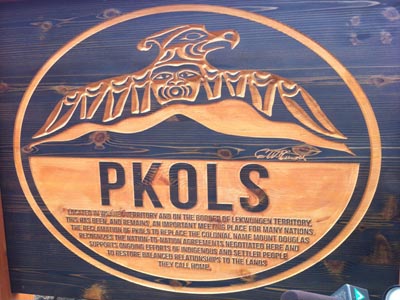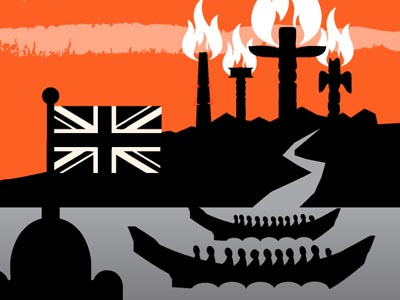
by Tom Swanky | Oct 16, 2013 | Canada's 'War'
In October 1864 the Colony of British Columbia martyred five “Chilcotin Chiefs.” One hour before sunrise on Oct. 26, with a crowd of 250 gathered to pay witness, the Crown hung these defenders of the Indigenous laws on a scaffold provocatively placed in a native graveyard. This event remains one of the most dramatic moments in the history of Canada’s relationship with the Indigenous Peoples. Oct. 26 is now a national day of remembrance for the Tsilhqot’in People. This year’s formal ceremony will be held at Puntzi Lake, near a key site in the events leading toward the martyrdom. How is Puntzi Lake connected to the eventual hanging of “The Chilcotin Chiefs?”

by Tom Swanky | Aug 8, 2013 | Canada's 'War'
Since the Tsilhqot’in People have never surrendered their sovereign control to Canada through some constitutional means, Canada can again only pretend to the necessary moral authority to license the mine. Anyone who asserts otherwise must show the process of constitutional change that gave Canada its supposed legitimate sovereign authority. Can any social entity gain legitimate authority over another through ethnic cleansing or genocide? Canadians would no more accept a new regime as a legitimate authority if it were to overthrow the Canadian constitution in the same manner as the Tsilhqot’in regime was displaced.

by Tom Swanky | May 23, 2013 | Canada's 'War', News
The reclamation of PKOLS to replace the colonial name Mount Douglas recognizes the nation-to-nation agreements negotiated here and supports ongoing efforts of indigenous and settler people to restore balanced relationships to the lands they call home.

by Tom Swanky | May 11, 2013 | Canada's 'War', News
On May 22, the Saanich and Songhees indigenous people, whose territories host much of Greater Victoria, will ask their guests to honour the area’s most notable landmark by calling it with the same name as they do, PKOLS (p’cauls.) Settlers now call it Mount Douglas. Restoring the indigenous presence here would be a strong symbol of cultural unification or sharing.

by Tom Swanky | Apr 28, 2013 | Canada's 'War'
Before April 1862, the indigenous population of what became British Columbia had no reason to think that its relationship with settlers would be any different from its mutually beneficial experience trading with the HBC. Then, suddenly, everything changed.

by Tom Swanky | Mar 27, 2013 | Articles, Canada's 'War'
What role did the 1862 smallpox epidemics play in the transition from indigenous sovereignty to colonial rule at “Comox,” often translated as “Place of Plenty.” Canadian academics commonly teach that European diseases swept North America ahead of settlement, leaving an empty wilderness to be occupied innocently by settlers. This is not what happened at Comox or throughout British Columbia.





